Table of Contents
Hydroponic farming, a method of growing plants without soil, has emerged as a sustainable and efficient solution to the challenges faced by traditional farming. As India faces increasing urbanization, water scarcity, and soil degradation, the potential of hydroponics in addressing these issues has garnered substantial attention. But while its environmental benefits are clear, is hydroponic farming financially viable in India? In this guide, we dive deep into the financial feasibility of hydroponic farming, exploring the costs, revenue potential, risks, and returns on investment (ROI) for farmers and agripreneurs.
Understanding Hydroponic Farming
Definition and Basics
Hydroponic farming is a method of growing plants using nutrient-rich water solutions instead of soil. This technique allows farmers to control the environment more efficiently—managing factors such as water, nutrients, light, and temperature—to maximize plant growth. Some common systems in hydroponics include:
- Nutrient Film Technique (NFT): A thin film of nutrient solution flows over plant roots.
- Deep Water Culture (DWC): Plants float on water while their roots are submerged in oxygenated water.
- Ebb and Flow (Flood and Drain): A nutrient solution temporarily floods the growing area and then drains away.
- Aeroponics: Plants are suspended in the air, and their roots are misted with nutrient solution.
Why Hydroponic Farming in India?
India’s agricultural landscape is undergoing significant shifts. With rapid urbanization and diminishing farmland, hydroponics offers a practical solution. It requires significantly less space and water than traditional farming. Given that hydroponic systems can be set up even in urban rooftops or warehouses, they are appealing in cities like Mumbai, Delhi, and Bengaluru, where land is scarce. Moreover, hydroponics promises pesticide-free produce, tapping into the growing consumer demand for healthy, organic foods.
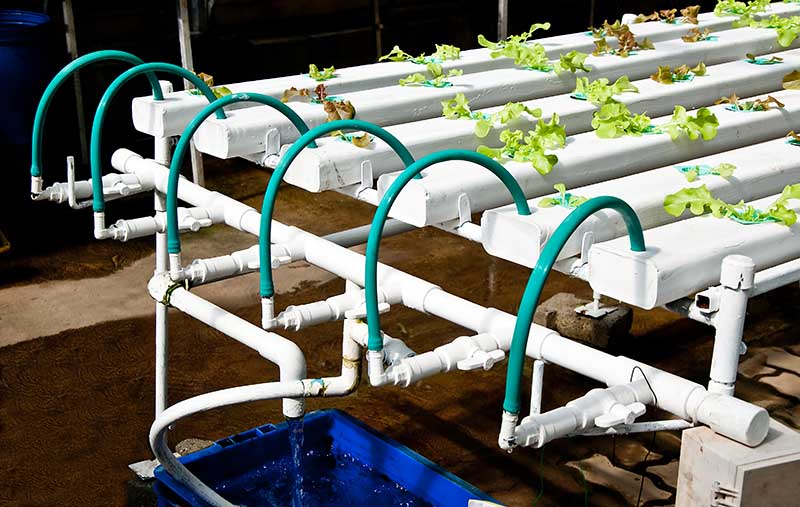
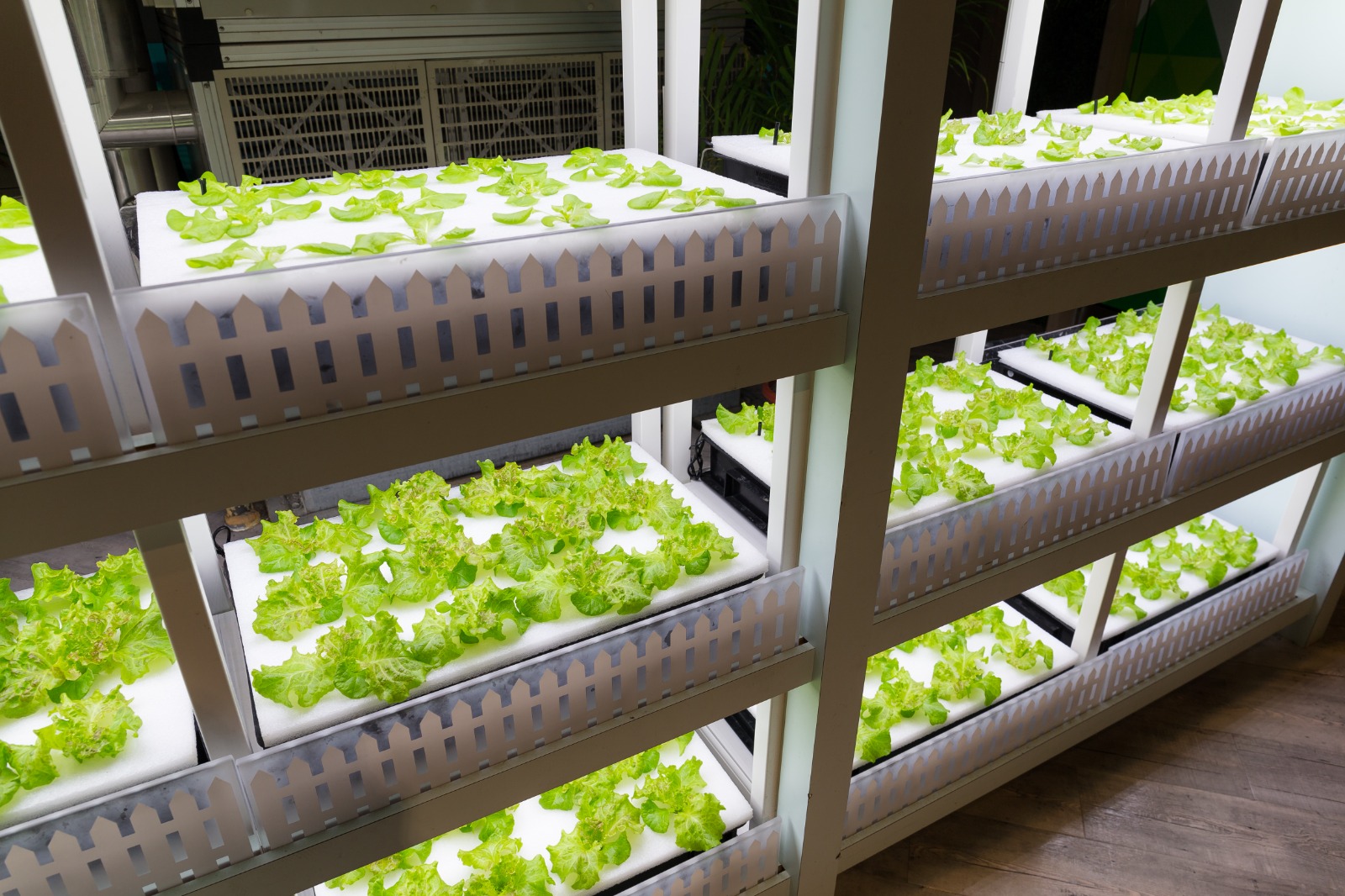
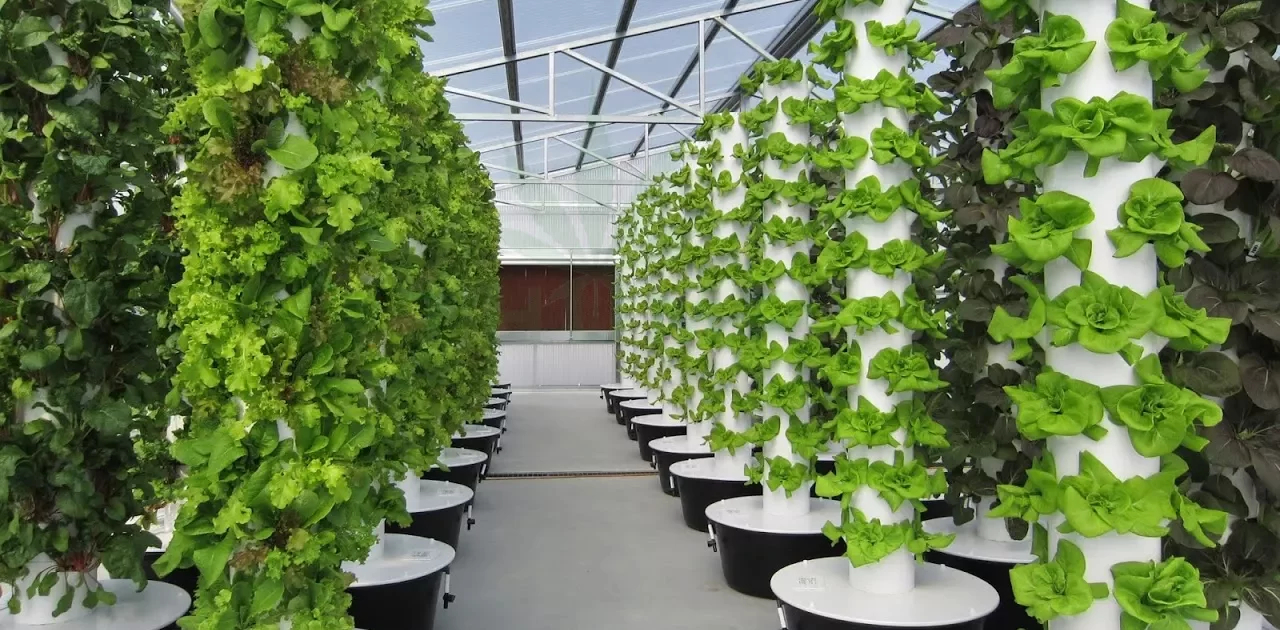
Cost Analysis of Setting Up a Hydroponic Farm
Initial Investment Breakdown
Setting up a hydroponic farm in India involves considerable initial investment, largely dependent on the scale, technology, and infrastructure you choose. Here is a breakdown of common costs:
- Land and Infrastructure:
- Depending on the region, the cost of land for a hydroponic farm can range from minimal (rooftop installations) to significant (commercial greenhouses).
- For large-scale commercial operations, investments in greenhouse infrastructure such as Cravo or polyhouse systems are essential. These structures help maintain optimal growing conditions by controlling temperature, humidity, and pests.
- Setting up a farm on one acre of land (excluding the land cost) can range between ₹70 lakh and ₹1.2 crore. This includes costs for greenhouses, climate control systems, and water treatment facilities, necessary to maintain an optimal environment for plant growth
- Equipment and Technology Costs:
- Costs for hydroponic systems (like NFT or DWC setups) depend on the level of automation and the type of crops being grown. LED grow lights, irrigation systems, water pumps, sensors for monitoring pH, EC (electrical conductivity), and humidity add to the expenses.
- High-tech systems using climate control and AI-based monitoring for precision farming will increase the upfront costs but can lead to better yields and long-term savings.
- Depending on type, quality and sophistication complete hydroponic system for one acre farm will cost around ₹70 lakh to ₹90 lakh.
- Seeds, Nutrients, and Substrates:
- Seeds, high-quality nutrient solutions, and substrates (such as coco coir, perlite, and vermiculite) are recurring costs.
- Labor Costs:
- Hiring skilled labor for installation, maintenance, and day-to-day operations is necessary. Hydroponic systems require specialized knowledge in managing both equipment and plant health.
Example: For an one acre commercial farm in India (approximately 4000 sq. m), the initial setup costs could range between ₹1.4 crore to ₹2 crore, depending on technology and location.
Operational Costs of Hydroponic Farming
Once the farm is operational, there are recurring expenses tied to electricity, water, nutrients, and labor. Here’s a detailed overview:
- Electricity: Hydroponic farms require continuous power for lights, water pumps, and climate control. For example, electricity costs for an one acre farm can be around ₹40,000-₹50,000 per month, depending on the scale and energy efficiency of the systems.
- Labor Costs: Skilled labor is essential to manage hydroponic systems, monitor plant health, and maintain equipment. Labor costs range from ₹60,000 to ₹80,000 per month for an one acre farm, depending on automation.
- Nutrients and Growing Mediums: The cost of nutrient solutions varies by the type of crops grown. On average, expect monthly expenses of ₹20,000-₹30,000 for one acre. Growing mediums (like coco coir or perlite) need periodic replacement, adding an additional ₹20,000-₹30,000 annually.
Revenue Potential of Hydroponic Farming
The revenue potential from hydroponic farming is highly dependent on crop selection, market access, and production scale.
Hydroponic farming typically results in faster growth and higher yields compared to traditional farming. For instance, One acre can yield 300-400 tonnes of lettuce annually, much higher than the 9-10 tonnes from traditional farming. Additionally, hydroponic systems allow for multiple crop cycles in a year due to controlled growing conditions.
High-Value Crops and Market Demand
Certain crops thrive particularly well in hydroponic systems, and these tend to be high-value crops with strong market demand. Popular choices include:
- Leafy greens (lettuce, kale, spinach)
- Herbs (basil, mint, cilantro)
- Vine crops (cherry tomatoes, cucumbers, bell peppers)
- High-value fruits (strawberries, melons)
- Medicinal plants (ashwagandha, tulsi)
There is a growing market for pesticide-free, organic produce, especially in urban areas where consumers are willing to pay a premium for quality and freshness.
Revenue Channels
- Direct to Consumer (D2C): Selling directly through farmer’s markets, subscriptions, or e-commerce platforms like BigBasket allows farmers to retain a larger portion of profits..
- B2B Sales: Supplying fresh produce to restaurants, hotels, and grocery chains can ensure stable demand and higher margins.
- Online Platforms: Sell through e-commerce websites like BigBasket or Amazon Fresh to reach a broader audience.
- Farm Tours & Workshops: Conduct educational tours and workshops to generate extra revenue and promote your brand.
- Value-Added Products: Create products like ready-to-eat salads, juices, and herb-infused oils, which often have higher profit margins.
- Export Markets: Export high-demand crops like exotic herbs and fruits, which can fetch premium prices internationally.
- Collaborations with Wellness Brands: Partner with organic stores, cafes, and health food companies to supply consistent, high-quality produce.
These strategies help diversify income sources and reduce dependence on one revenue channel, increasing overall profitability and stability.
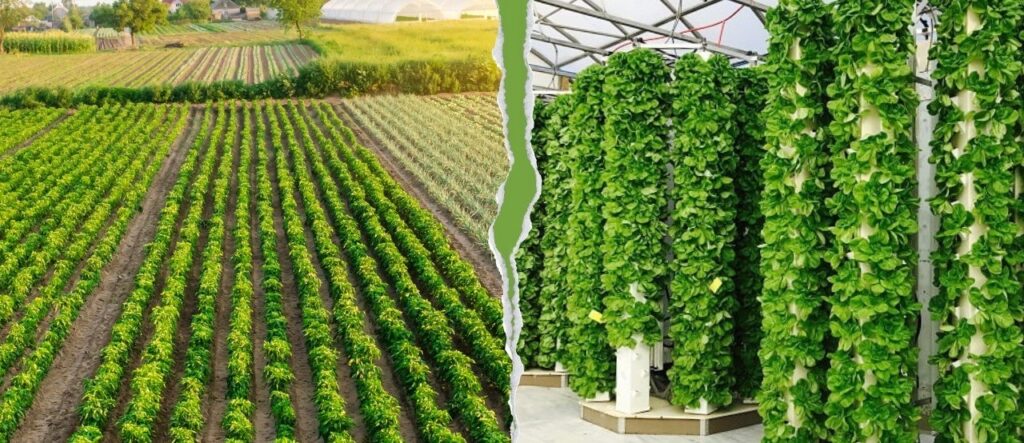
Financial Projections and ROI
Return on Investment (ROI)
ROI timelines depend on the scale of the operation:
- Small-Scale Setup: ROI can be achieved in 3-4 years. For example, a 10,000 sq. ft. farm growing leafy greens can break even in just over 3 year
. - Medium-Scale Setup: Typically, 2-3 years, depending on crop yield, market prices, and sales strategy.
. - Large-Scale Automated Setup: Although it’s need higher capital investment, but ROI can be achieved in 1-2 years. Automation and efficient systems can increase profit mrgin over time.
.
Break-Even Calculation
To calculate your break-even point:
- Total Investment: Sum up your initial costs (₹1.5-2 crore for a one-acre setup).
- Monthly Revenue: Estimate your income based on yield and market price (e.g., ₹5 lakh-₹6 lakh for bell pepper in wholesale).
- Monthly Expenses: Include recurring costs (₹1,50,000/month for utilities, labor, and nutrients).
- Break-Even: Divide total investment by net monthly profit. This could be around 3-4 years.
ROI (Return on Investment)
The ROI for hydroponic farms can vary from 20% to 30% annually, making it an attractive investment for those who can manage the initial capital expenditure.
Government Policies and Incentives for Hydroponic Farming in India
India’s government has taken significant steps to encourage modern and sustainable agricultural practices, including hydroponic farming. As the demand for innovative farming solutions rises, various subsidy programs and incentives are being rolled out at both central and state levels to support hydroponic farmers. Let’s break down the key initiatives and available subsidies in this sector.
1. Central Government Initiatives
a. National Horticulture Board (NHB) Subsidy: The National Horticulture Board (NHB) plays a pivotal role in promoting hydroponic and aeroponic farming through its “Development of Commercial Horticulture through Production and Post-Harvest Management” scheme. This initiative offers:
- 25% subsidy on project costs up to a maximum limit of ₹50 lakh for hydroponic farms
- Projects covering over 1,000 square meters can receive specific financial assistance, encouraging larger-scale ventures
.
b. Credit-Linked Back-Ended Subsidy: For certain types of protected cultivation, farmers can access a 20% credit-linked back-ended subsidy of the total project cost, with a limit of ₹25 lakh for general regions and ₹30 lakh for hilly and northeastern regions..
c. Agricultural Infrastructure Fund (AIF): The AIF provides low-interest loans and financial support for infrastructure development in agriculture, including hydroponic farms. Farmers can get up to 75% financing on projects, which greatly reduces the initial burden of setting up
.d. Income Tax Benefits: Hydroponic farmers are eligible for tax benefits under Indian tax laws, such as 80% depreciation on the greenhouse structure, allowing significant tax relief in the initial years of the project
2. State-Level Incentives
Different states in India have launched their own schemes to encourage farmers to adopt hydroponic farming, tailoring their subsidies to local agricultural needs and goals:
a. Maharashtra’s 50% Subsidy: Maharashtra leads the way by offering a 50% subsidy specifically for hydroponic farmers growing fodder for livestock. This scheme has gained attention as it provides substantial financial support for hydroponic setups focusing on animal feed production.
b. Gujarat and Karnataka: These states have similar subsidy schemes under their horticulture missions, with grants ranging from 40% to 50% of capital costs for hydroponic systems, targeting both small and large-scale farms.
3. Additional Benefits and Support
a. Solar Power Subsidies: Hydroponic farms often require continuous power supply for lighting, water pumps, and climate control systems. Under the PM-KUSUM scheme, farmers can install solar-powered systems at subsidized rates to reduce electricity costs and ensure a sustainable energy source for their operations.
b. Crop Insurance: Hydroponic farms, like traditional farms, can be insured under schemes such as Pradhan Mantri Fasal Bima Yojana (PMFBY). This provides financial protection against losses due to environmental disruptions, system failures, or unforeseen calamities.
c. Loans and Financing: Farmers can also access agricultural loans at low-interest rates, with many banks offering schemes specifically tailored for hydroponics. These loans help cover up to 75% of the project cost, reducing the upfront financial burden for new entrants.
4. Challenges in Accessing Subsidies
While there are numerous subsidies and financial supports available, hydroponic farmers often face challenges in accessing these benefits due to limited awareness and bureaucratic hurdles. The process of applying for subsidies requires detailed project proposals, approvals, and documentation, which can be time-consuming. Furthermore, dissemination of information about these schemes is still lacking in many rural and semi-urban areas
Risks and Challenges in Hydroponic Farming
Initial Investment and Maintenance
The high upfront investment remains a barrier for many farmers. While costs can be recouped over time, the initial capital outlay for land, infrastructure, and technology can be daunting.
Market Penetration and Sales
Despite the growing demand for organic and pesticide-free produce, consumer awareness about hydroponically grown products is still limited. Farmers must invest in marketing to educate consumers and establish trust in their produce.
Skills and Technology
Hydroponic farming is technology-driven, and the success of the operation depends on the farmer’s ability to maintain the system. Training and continuous learning are essential to stay updated on new technologies.
Weather and Environmental Risks
While hydroponic farms are relatively insulated from weather conditions, power outages or equipment malfunctions can lead to crop loss. Investing in backup power and regular system maintenance is crucial.
Long-Term Financial Sustainability
Scalability of Hydroponic Farms
One of the advantages of hydroponic farming is its scalability. Farms can start small, with basic setups, and expand as they gain experience and market share. Vertical farming techniques further enhance scalability, allowing for more production in a limited space.
Vertical Integration and Value Addition
Farmers can enhance profitability by integrating value-added services like ready-to-eat salad packs, herbs packaged for direct consumption, or even cosmetic products from medicinal plants.
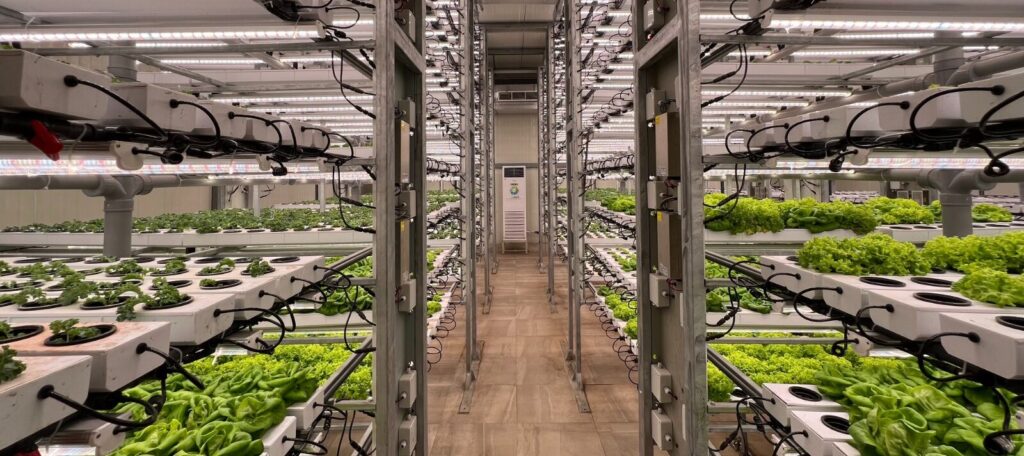
Conclusion
Hydroponic farming presents a promising opportunity for Indian farmers and agripreneurs, offering high yields,better resource efficiency, and the potential for premium pricing in the market. However, it requires significant upfront investment, a skilled workforce, and ongoing maintenance of advanced technologies. The financial feasibility of hydroponics is tied to careful planning, understanding of the market, and efficient use of resources.
While the initial costs may be high, especially for large-scale operations, government incentives and subsidies can offset a significant portion of these expenses. Hydroponics can be a lucrative venture for those who are prepared to invest both time and capital, with the possibility of breaking even within 3-5 years and achieving high returns on investment.
As India continues to face challenges in traditional agriculture, hydroponics offers a sustainable and financially viable alternative, especially for high-value crops. With the growing demand for organic, pesticide-free produce, now is an excellent time for farmers and agribusinesses to consider hydroponic farming as a profitable and future-proof venture.








